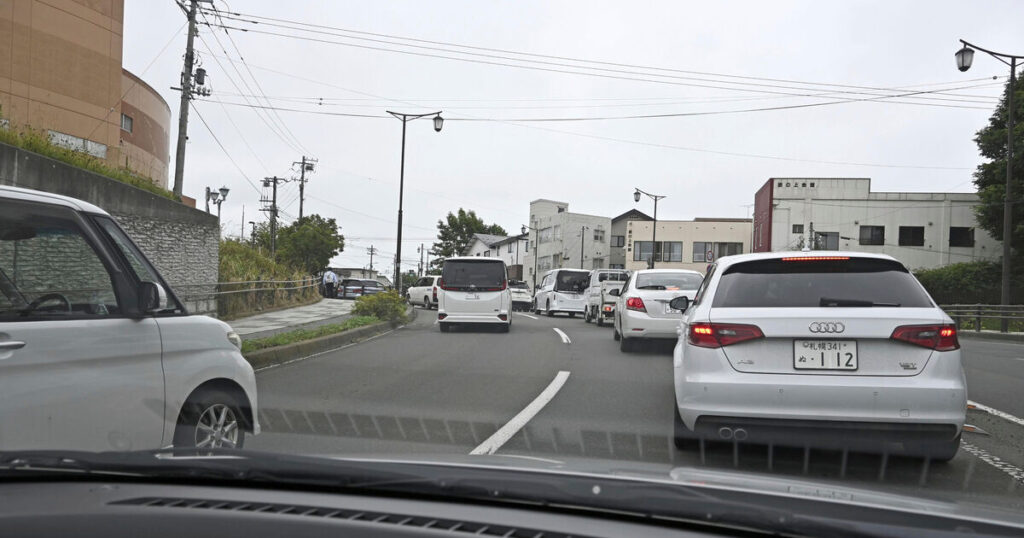A powerful earthquake, registering a magnitude of 8.8, struck Russia’s Far East on Wednesday, triggering tsunami warnings across the Pacific region. Alerts were issued for Alaska, Hawaii, and as far south as New Zealand.
The earthquake, initially reported as 8.7 magnitude, led to tsunami waves impacting coastal areas of Russia’s Kuril Islands and Hokkaido, Japan’s northern island.
In Honolulu, Hawaii, tsunami warning sirens were activated, and residents were advised to seek higher ground.
The Japan Meteorological Agency reported that a 30-centimeter tsunami wave reached Nemuro, on the eastern coast of Hokkaido.
A Tsunami WARNING has been issued by the NWS Pacific Tsunami Warning Center for the Hawaiian Islands following a massive 8.7 earthquake off the east coast of Kamchatka, Russia. The first tsunami wave is estimated to arrive in Hawaii by 7:17pm Hawaii Standard Time, July 29, 2025.… pic.twitter.com/0KiltgdkQa
— Pacific Disaster Center – PDC Global (@PDC_Global) July 30, 2025
The first tsunami wave impacted Severo-Kurilsk, the main settlement on Russia’s Kuril Islands, according to regional governor Valery Limarenko.
He assured that residents were safe and remained in elevated locations until the risk of further waves subsided.
Damage and evacuations were reported in the Russian regions closest to the earthquake’s epicenter on the Kamchatka Peninsula.
The Pacific Tsunami Warning Centre warned that waves of one to three meters above normal tide levels were possible along coastlines in Hawaii, Chile, Japan, and the Solomon Islands. Certain coastal areas of Russia and Ecuador could experience waves exceeding three meters.
The centre emphasized that a tsunami could cause damage to all Hawaiian islands.
“Urgent action should be taken to protect lives and property,” the warning stated succinctly.
The earthquake, which occurred at 8:25 am Japan time, was initially measured at 8.0 magnitude by Japanese and US seismologists. Later, both Japan and the USGS revised their measurements to 8.7. The USGS reported a depth of 12 miles for the earthquake.
According to Japan’s NHK television, the quake, approximately 160 miles from Hokkaido, was only slightly felt.
Russia’s Tass news agency reported from Petropavlovsk-Kamchatsky, the largest city near the epicenter, that many residents fled into the streets without shoes or outerwear. Inside homes, cabinets overturned, mirrors shattered, cars swayed, and building balconies visibly shook.
Tass also reported power outages and mobile phone service disruptions in the Kamchatka region’s capital. A local Russian official indicated that residents on Sakhalin Island were being evacuated, and emergency services were operating at full capacity.
The National Tsunami Warning Centre, based in Alaska, issued a tsunami warning for parts of the Alaska Aleutian Islands and a tsunami watch for sections of the west coast, including California, Oregon, Washington, and Hawaii.
The advisory also encompassed a significant portion of Alaska’s coastline.
This earthquake appeared to be the strongest globally since the 9.0 magnitude earthquake off northeast Japan in March 2011, which caused a devastating tsunami and triggered meltdowns at the Fukushima nuclear power plant. Only a few earthquakes of greater magnitude have been recorded worldwide.
New Zealand authorities issued warnings of “strong and unusual currents and unpredictable surges” along the country’s coastlines.
The government emergency management agency advised people to evacuate the water, beaches, shore areas, harbours, marinas, rivers, and estuaries.
New Zealand is situated in the South Pacific, approximately 6,000 miles from the epicenter.


